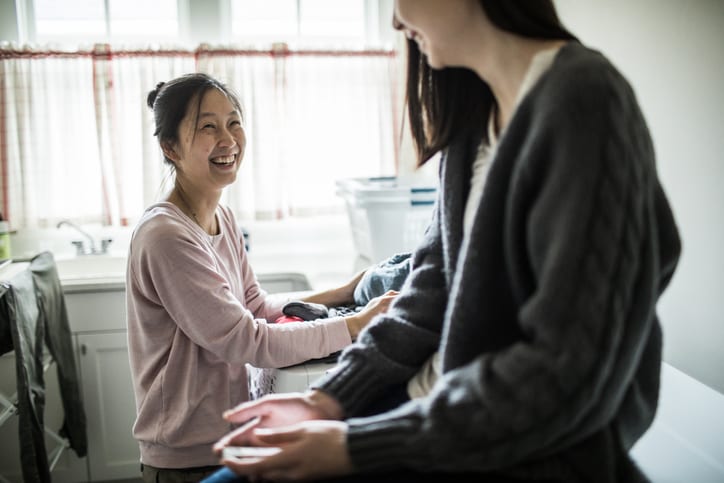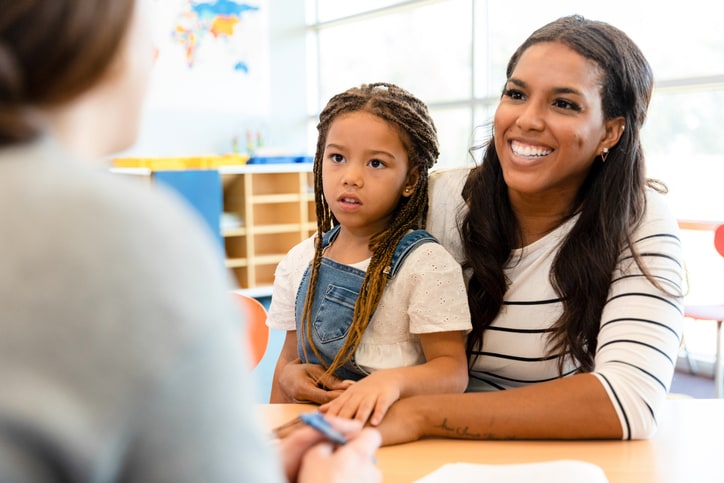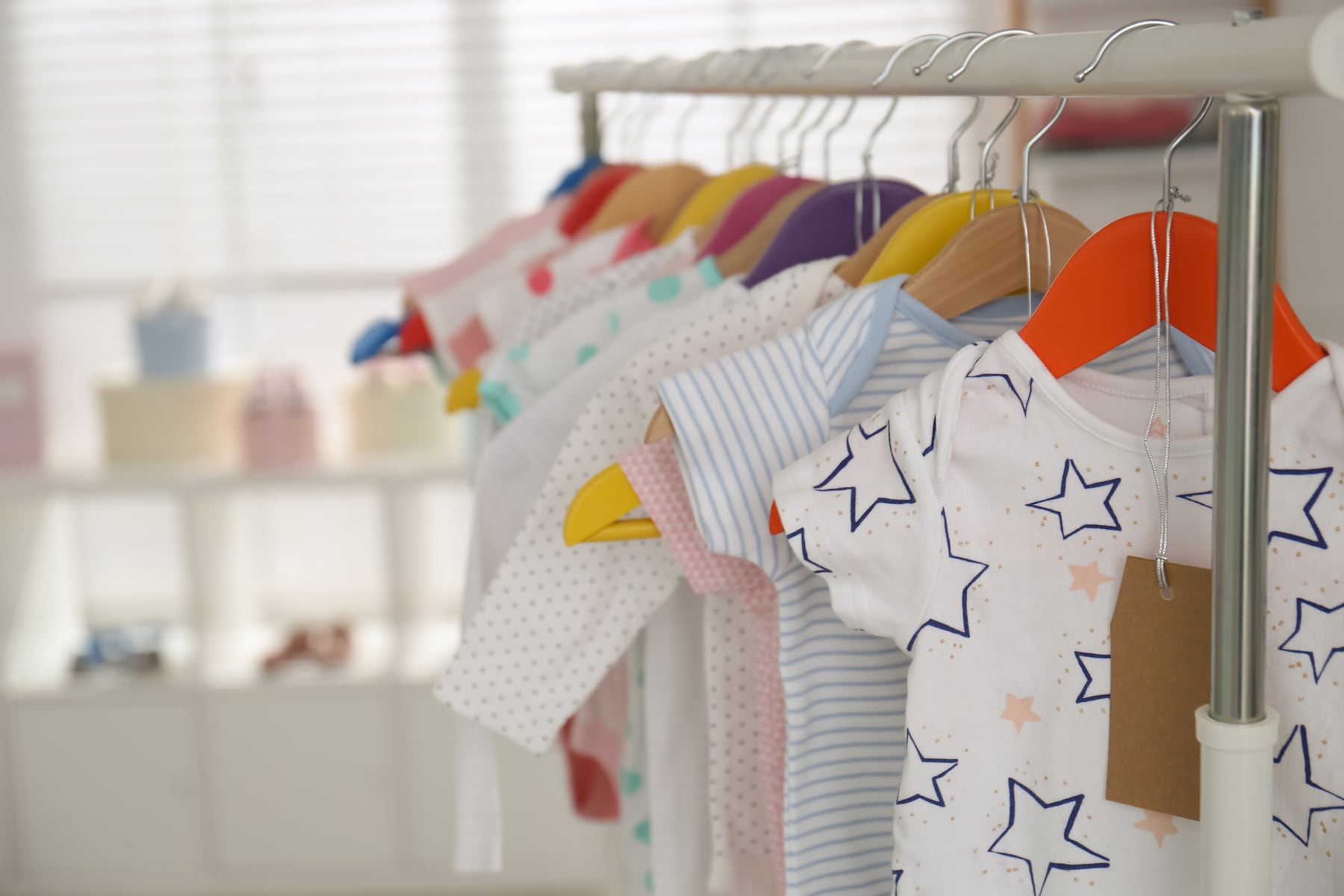Whether you’re ready for it or not, puberty happens. And, not surprising in the least, the more you prepare your child — and yourself — the easier it is to navigate this famously rocky terrain. In an ideal scenario, you’ve been casually talking to your child about puberty and the body and emotional changes that accompany it, in order to normalize it since they were little. But if you haven’t, that’s OK! There’s no expiration date when it comes to having an open dialogue about puberty with your child (even if it involves them cringing throughout the duration).
“A parent or caregiver can have all of the information for what occurs during those pubescent years, yet information is only a piece of the puzzle,” says Lori Reichel, assistant professor at SUNY Cortland, podcaster for “The Puberty Prof Podcast” and author of “Common Questions Children Ask About Puberty.” “What’s most important is being an approachable and askable parent, which means having positive and healthy communication with your child [and letting them know] they can ask you questions no matter what their age is.”
“A parent or caregiver can have all of the information for what occurs during those pubescent years, yet information is only a piece of the puzzle.”
— LORI REICHEL, ASSISTANT PROFESSOR, PODCASTER AND AUTHOR
From a crash course in what happens during puberty for girls to how to cover a variety of topics in a healthy way, here’s what parents should know about talking to their kids about puberty in girls.
When does puberty start for girls?
According to Dr. Danielle Street Stephens, a pediatrician at Holston Medical Group in Kingsport, Tennessee, puberty in girls typically starts between 8 and 10 (the American Academy of Pediatrics [AAP] gives the range of 8-13). “Before 8,” Stephens says, “it’s considered premature puberty.”
Physical signs of puberty in girls
“The first physical sign of puberty in girls usually is breast budding,” Stephens explains. “This is when girls start to have a little enlargement in their breasts. This also, if you haven’t done so already, is a great time to start talking about puberty and what to expect in the next few years.”
Other physical signs of puberty in girls include:
- Body hair (pubic area, underarms and on legs).
- Vaginal discharge.
- Body odor.
- Increase in height.
- Wider hips.
- Acne (for some).
- Periods (Menstruation usually starts “within two years of breast budding,” according to Stephens.).
Mental and emotional signs of puberty in girls
In addition to the visible signs of puberty, there’s also a number of invisible signs. Heightened emotions and social pressure are at an all-time high for girls during puberty, which can manifest in irritability, moodiness and even sadness. Romantic and sexual feelings may also start to crop up during this time.
According to the American Academy of Family Physicians (AAFP), “emotions start to level out at the end of puberty,” which generally happens between 14-15, depending on when your child started. (Puberty typically lasts between two to five years.)
“Girls are particularly concerned with fitting in during puberty,” notes Jennifer Weber, a clinical psychologist and the director of PM Behavioral Health at PM Pediatric Care. “They’re likely comparing themselves to their fellow female classmates, seeing if what they are experiencing is typical. They may be sensitive as well to how all peers approach them — those of the same and opposite sex, getting their cues from them as to whether they are ‘normal.’”
“Girls are particularly concerned with fitting in during puberty.”
— JENNIFER WEBER, CLINICAL PSYCHOLOGIST
Tips for talking about puberty for girls
While normalizing body hair and touching on “friend drama” when your child is little is a smart idea, Stephens notes that younger kids may not be able to fully intellectualize these things… until they’re actually going through them.
“Children aren’t forward-thinkers; they’re concrete,” explains Stephens. “If you’re explaining menstruation to a 6-year-old, they’re not going to care or remember. An ongoing dialogue is great, but it will hit closer to home when they — or their friends — are starting to experience it.”
In other words: When your child is about to go through puberty — or is going through it — you’ll expound upon the framework you’ve already set. But even if you’re without a framework, there are a number of things you can do to make the transition — for both of you — as healthy as possible.
Here’s what the experts recommend:
Start with basics (at first)
According to Weber, it’s best to keep menstruation matter-of-fact when talking to your child. “You can say something like: ‘Women get their periods when they hit puberty because their bodies become able to conceive and bear children. Although you will not need or want to do this for some time, it is important to know how to care for your body once this starts happening,’” she says.
“Tell your child what to expect — what they will see and feel; what supplies they’ll need and how to use them,” Weber continues. “And if your child is at an age where they may get their period soon, put together a small kit they can carry in their bag or purse so they feel prepared.”
Use medically accurate language
According to Reichel, parents and caregivers should use accurate terms when discussing puberty with kids. “Using slang infers that we do not feel comfortable with the body parts that mature during puberty,” Reichel says. “Showing your discomfort of saying actual body part terms tells your child you aren’t comfortable talking about the topic.”
“Using slang infers that we do not feel comfortable with the body parts that mature during puberty.”
— LORI REICHEL, ASSISTANT PROFESSOR, PODCASTER AND AUTHOR
Don’t shame
According to Dawn Ravine, a sexuality educator and creator of the “Never Fear Talks” at Lurie Children’s Hospital in Chicago, if you’ve noticed pimples and/or body odor, leave out the “shame and yucks.” “If your child has body odor, simply talk about increasing bathing, clothes washing and deodorant use,” she says. “And if you notice acne, normalize that it isn’t because their skin is dirty, but they are likely hormonal and recommend gentle cleansing twice a day — and then leave them alone.”
Teach about all bodies
Ensuring your child learns about their own body and other bodies helps build empathy — a particularly valiant trait during puberty. “If you have a child who will never get a period, still remember to talk about periods,” says Ravine. “If you have a child who doesn’t have penis, still remember to talk about visible erections and how these can happen sometimes for no reason at all during puberty and can be really embarrassing if someone points it out.”
Don’t assume school covered it
When it comes to puberty education across the country, there’s really no standardization at schools, so, as Ravine notes, don’t assume the topics you want your child to know about have been covered — or, if they were, that your child was paying attention.
“Puberty education in schools varies from none, to very binary with a focus on reproduction, to empathic, medically accurate and inclusive of human diversity and social/emotional aspects of puberty,” says Ravine, who recommends the latter.
“Medically accurate includes that there isn’t just one or two set paths for puberty,” she explains. “There are many paths through puberty, many time frames and many feelings. This is called normal human variation. We can talk about patterns — ‘most people with vaginas will have ovaries and a uterus and get a period, but not all.’ This is helpful in combating stigma for anyone that will have a different experience, whether that is your child or a friend.”
“There are many paths through puberty, many time frames and many feelings. This is called normal human variation.”
— DAWN RAVINE, SEXUALITY EDUCATOR
Be honest
If your child comes to you with questions you aren’t sure about, don’t wing it. Not only will doing so potentially result in false information, it’s setting a poor example.
“Admit it when you don’t know something,” says Reichel.
To that point, it’s OK to recognize the fact that puberty is generally an awkward subject. “Acknowledge that they may be embarrassed and reassure them these conversations are hard, but necessary,” Weber says.
Don’t feel like you have one chance to “get it right”
“Remember: Your child will continue to grow, which means they need many conversations with you, not a one-time talk,” Reichel says. “Starting the conversations when your child is younger is naturally setting up future talks and signaling to your child that you’re an open door.”
Consider media
If puberty is a particularly difficult topic for you or your child, consider books and other media.
“Depending on your style, books and online programs can be helpful here to create a common language between parents and kids,” notes Weber.
Here are books, websites and apps that can help families navigate all aspects of puberty:
- Scarleteen.com (teen-facing, LGBTQ inclusive, articles on all aspects of sexuality, relationships and sexual health).
- Amaze.org (animated videos on all sexuality education topics from 4th grade to middle school).
- Amaze.org/jr. (geared towards younger children, pre-K through 3rd grade).
- Sex Is A Funny Word (late elementary).
- Wait, What? (middle school).
- The Every Body Book (all ages with caregiver).
- Vaginas and Periods 101 (all ages and all genders pop-up book).
- TALK puberty app (help for guiding conversations).
- Sex Positive Families (information and advice on a wide array of physical and emotional topics).
Ravine adds that media can be a useful tool for bringing up subjects, such as periods. “Is there a character in a show or book that just got a period? Ask what they think or give some quick info,” she says. “Is there a commercial for menstrual discs? Volunteer to look up menstrual cups and discs and learn about them together.”
Teach empathy
Puberty is awkward for everyone — make sure your child knows that, and teach them to be empathetic to everyone during this time. “Remind your child not to point out any big changes happening on someone else’s body, and to be an upstander if they hear other kids laughing about a peer’s body,” Ravine says.
“For instance, if they notice a peer being made fun of for being ‘smelly,’ remind them that people might be struggling with depression, going through a major family stress or change where they don’t have access right now to showers or supplies or maybe they are just super busy and haven’t had time to focus on hygiene,” she continues. “Privately letting a safe adult at school know so that they can offer support is ideal.”
Teach diversity
Something else to instill is diversity in puberty, which can be explained by discussing “puberty patterns instead of set rules or binaries,” Ravine says, adding that the Gender Spectrum’s Guide to Gender Inclusive Puberty & Health Education is a great source for this.
“Puberty may vary for a variety of reasons,” she says. “And when you explain this, you can normalize diversity.”
Reach out to a professional
“If you’ve noticed your child is withdrawn, sad, isolated or covering up beyond what is normal for the weather, restricting food or inflicting self-harm during this time, it’s time to seek out additional support,” Ravine says. “If possible, find a therapist with adolescent experience, as your child might be experiencing gender dysphoria, struggling with body image or potentially experiencing harm or bullying that they have not been ready to share with you.”
“Accessing quality mental health care can be challenging, but most schools have a counselor or social worker who is able to offer support,” Ravine continues. “Reaching out to your child’s school, sharing what you are noticing at home and addressing any concerns you have and asking for that extra level of support is a great first step.”





